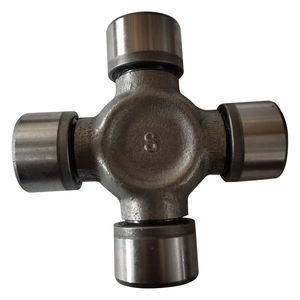The option of steel for rocker arm shafts is an essential factor to consider in engine layout, as this part plays a crucial function in valvetrain efficiency. Rocker arm shafts move motion from the camshaft to the shutoffs, enduring cyclic loads, rubbing, and raised temperatures. The material needs to show high tiredness toughness, use resistance, and dimensional stability under operational anxieties. This write-up checks out the crucial steel qualities ideal for rocker arm shafts, their homes, and the reasoning behind their choice.
(what steel for rocker arm shaft)
** Material Needs for Rocker Arm Shafts **.
Rocker arm shafts operate in demanding environments characterized by repetitive oscillatory motion, get in touch with stresses from pivot factors, and exposure to engine oil at varying temperature levels. Key product demands consist of:.
1. ** High Exhaustion Strength **: To withstand cyclic flexing and torsional stress and anxieties without crack initiation.
2. ** Wear Resistance **: To reduce surface deterioration from moving call with rocker arms.
3. ** Firmness and Strength **: An equilibrium in between surface firmness for wear resistance and core durability to prevent brittle crack.
4. ** Machinability **: To help with precision manufacturing of shafts with limited tolerances.
5. ** Warm Treatment Compatibility **: Compatibility with procedures like carburizing, induction solidifying, or nitriding to enhance surface properties.
** Common Steel Grades for Rocker Arm Shafts **.
1. ** SAE 4140 (AISI 4140) **.
A medium-carbon, low-alloy steel containing chromium and molybdenum, 4140 offers outstanding strength-to-weight proportions and exhaustion resistance. Its make-up (0.40% C, 1% Cr, 0.20% Mo) allows through-hardening to accomplish a consistent solidity profile. Relieving and solidifying can generate tensile toughness exceeding 850 MPa, making it suitable for high-load applications. The chromium web content improves corrosion resistance in oiled atmospheres, while molybdenum enhances hardenability and high-temperature stability.
2. ** SAE 4340 (AISI 4340) **.
This nickel-chromium-molybdenum alloy steel gives superior durability and tiredness efficiency contrasted to 4140. With higher nickel web content (1.8%), 4340 shows exceptional crack resistance under effect lots, making it optimal for high-performance or sturdy engines. However, its higher expense and complicated warm treatment needs (e.g., oil quenching) limitation its use to applications where severe longevity is focused on.
3. ** SAE 8620 (AISI 8620) **.
A case-hardening steel with reduced carbon material (0.20% C) and additions of nickel, chromium, and molybdenum, 8620 is extensively utilized for components needing a difficult surface area and pliable core. Carburizing produces a wear-resistant surface area layer (55– 62 HRC) while keeping core durability (30– 40 HRC). This grade is cost-efficient for mass-produced rocker arm shafts in traveler automobiles, where surface area longevity and producing effectiveness are paramount.
4. ** SAE 52100 (AISI 52100) **.
A high-carbon, chromium-bearing steel (1.0% C, 1.5% Cr), 52100 is renowned for its exceptional wear resistance and rolling call exhaustion buildings. Often used in bearing applications, it appropriates for rocker arm shafts in high-revving engines where surface stability under Hertzian contact stresses is vital. Nevertheless, its reduced toughness necessitates precise warmth therapy to prevent brittleness.
5. ** SAE 1045 (AISI 1045) **.
A medium-carbon steel (0.45% C) with great machinability and moderate strength, 1045 is a cost-efficient choice for low-stress applications. Induction solidifying can improve surface solidity (approximately 55 HRC), though its core strength and fatigue resistance are inferior to alloy steels.
** Factors Influencing Steel Choice **.
1. ** Application Context **: Traveler car engines often focus on price and manufacturability (e.g., 8620), while motorsport or industrial engines may select premium grades like 4340.
2. ** Production Refine **: Machinability and post-processing requirements affect product choice. For example, 8620’s compatibility with carburizing aligns with high-volume manufacturing.
3. ** Operational Setting **: Engines with aggressive shutoff timing or turbocharging may demand steels with higher thermal security, such as 4140.
4. ** Cost Restraints **: Budget restrictions might favor 1045 or 8620 over alloy steels, given efficiency criteria are met.
** Final thought **.
(what steel for rocker arm shaft)
The option of steel for rocker arm shafts rests on an equilibrium between mechanical homes, producing feasibility, and economic considerations. While 4140 and 8620 are market requirements for general-purpose applications, specialized engines gain from sophisticated alloys like 4340 or 52100. Engineers have to assess operational loads, manufacturing ranges, and lifecycle expenses to optimize product option, making certain dependability and durability of the valvetrain system. Developments in steel metallurgy and warm treatment innovations remain to increase the efficiency envelope of rocker arm shafts, supporting the evolution of high-efficiency interior combustion engines.


